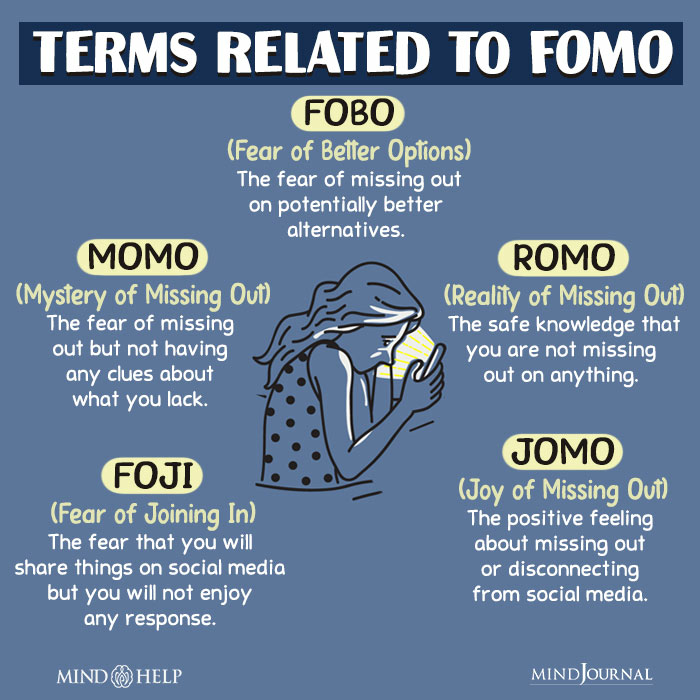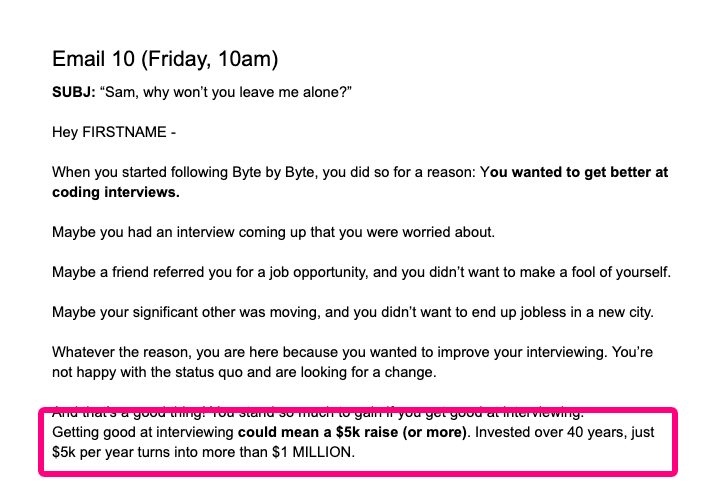Images and video are important parts of marketing, but your copywriting does most of the heavy lifting. Copy raises awareness, presses on pain points, supplies evidence, and ultimately drives customers to take action.
In this guide, we dive into conversion copywriting. We explain how it works, why you need it, and how to produce effective copy that drives sales.
What is Conversion Copywriting?
Conversion copywriting is persuasive writing that motivates a person to take a specific action. The goal is to write in a simple, clear, and meaningful way that hones in on a single action. Conversion copywriting can be used anywhere, such as landing pages, product descriptions, ads, social media, email copy, and more.
In many cases, a conversion refers to buying a product or service, but that isn’t the only usage. Here are some other types of conversions that benefit from conversion copywriting.
- Filling out and submitting a form
- Making a phone call
- Sharing an offer on social media
- Going to another page of your website
- Adding something to an online shopping cart
- Subscribing to a list or newsletter
- Booking a consultation call
- Clicking any kind of call-to-action button
Conversion copywriting is the marriage of creativity and science. In order to write high-converting copy, you need to understand your audience well, make use of time-tested psychological principles, and run experiments to test your copy’s effectiveness.
15 Conversion Copywriting Tips
Crafting conversion copy requires creativity and experimentation. We can’t tell you exactly what to write to sell to your customers, but we can give you some tips to make your copy more effective.
1. Perform lots of customer research
If you want to use the words and phrases that drive your customers to make decisions, you have to understand your audience’s pain and how your products solve those pains. In fact, the research phase should take up the bulk of your time.
Start by gathering as much information as possible from your internal teams, such as sales and engineering. Collect whatever they’ve learned about the customer and how the product helps them. It’s also helpful to know why past customers no longer buy.
Collect all of this into a customer persona document. SEMRush has a great example:

Next, do some competitor research to understand how your product is different from other options. You can use this information to explain why your product is a better solution than others.
Finally, do some direct research by having real conversations with your customers. Ask direct questions about their needs, pains, and goals. Ask them how your products or services solve their issues and what their life is like now.
Don’t skimp on this part of the process. Every nugget of wisdom and kernel of insight you obtain helps develop powerful copy that resonates with your audience.
2. Start with a clear objective
Before you write anything, it’s important to understand what you are trying to achieve. Once you know what action you want your readers to take, you can work backwards from it. Most importantly, you can focus on it without introducing any copy that distracts your audience.
For instance, suppose you’re writing a product description for a product details page. Your job is to get the reader to add the product to their cart. That’s it. Don’t write copy that sells other products. Don’t write any words that direct your reader to your charity work or your Instagram profile. Focus on getting them to click “add to cart.”
3. Speak to their pain points
Your customers have problems. They may not be serious problems, but they are problems nevertheless. In order to present your products and services as solutions, you must first acknowledge those problems.
Don’t be afraid to dig deep here. The better you can describe your customer’s problems, the more likely they are to see you as a solution provider.
In some cases, your customers are deeply affected by their problems, so they understand them keenly. In other cases, your customers may not understand their own problems well, or at all. It’s your job to educate them.
Here’s an adage that’s important to keep in mind: People purchase when they feel understood, not when they understand you.
4. Measure your customers’ way of speaking
Whenever you write copy, it’s important to use the same words, phrases, and tone that your customers would use. This ensures that your customers feel understood.
These details should be collected during the research process. Over time, using your customer’s voice will become second nature, but in the beginning it helps to have a resource.
One way to adopt your customer’s voice is to use social listening. Monitor how your customers speak on social media and other public places online. Even customer complaints can help you understand how they communicate.
5. Consider your customers’ journey
Customers have different needs at different times. If they are barely aware of their problem, they probably aren’t ready to buy. But if the problem is especially painful right now, they may have their wallet open already. Your job is to serve the right copy at the right time by recognizing what they need at each stage of the buyer’s journey.

In the awareness stage, buyers are just learning about their problem. Copywriting helps them diagnose their problem and understand its full scope. You can provide educational content that helps them dive deeper into the problem so they can see the real pain.
In the consideration stage, buyers know their problem and have a general idea of how to solve it, but haven’ made their final decision. Your goal is to convince them that making a purchase will help them solve the problem.
In the decision stage, buyers know how to solve their problem and are considering specific solutions. Your job is to convince them that your product is the best option, as opposed to your competitors.
Here’s an example of those three stages:
- Awareness: “I think I’m hungry.”
- Consideration: “Should I cook at home or get take out?”
- Decision: “Should I get pizza or burgers?”
Since your customers have different needs at different times, your copy should address their current position in the journey. For instance, if a customer isn’t ready to buy, you might use a call-to-action like “Get updates on the latest trends.” But if they’re in a position to buy, a better call-to-action might be “Shop the newest styles.”
6. Create fear of missing out
Fear of missing out – or FOMO – is a powerful psychological principle that encourages people to take action right now, rather than miss their opportunity. If you push on their fear of missing out, you can shorten their decision making process.

Leverage FOMO by including urgency and scarcity into your copy. Urgency is a time limit or deadline on your offer (such as “Offer ends in 24 hours”). Scarcity is a limit on the number of units or offers available (such as “5 left in stock”).
That said, your usage must be believable. Overusing FOMO by creating artificial urgency and scarcity will make people distrust you. For instance, no one would believe you if you said you had a limited supply of a digital product.
7. Include plenty of social proof
Social proof is the idea that people are more likely to take action if they see other people taking it. You can persuade new customers and make them feel comfortable about taking action by showing off the happiness of the past customers.
In the ecommerce space, product reviews are the most common type of social proof. Testimonials, case studies, celebrity endorsements, expert recommendations, and industry certifications are other useful tools.
Here some clever ways to add social proof to your site with a little bit of copywriting:

8. Handle common objections
Every product or service has a few reasons why someone wouldn’t buy. Wherever possible, weave solutions to those objections into your copy.
For instance, if your customers routinely ask about the quality of your materials, you might mention the quality grading or a specific certification you have. These details prevent the customer from considering the objection at all.
If there are a lot of potential objections related to your products, consider including a fleshed-out FAQ section somewhere on your product pages to answer these questions.
9. Use action-focused verbs
Fill your language with words that imply motion and direction. Your customers should feel like they are moving toward a solution or a better version of themselves.
Example of bad copy: “Click here to shop.”
Yes, “click” is a verb, but no one is at your store to click on links. Use words that match your customers’ intent. Here are some better examples:
- “Shop maternity dresses.”
- “Find your new style.”
- “Optimize your workout.”
- “Explore healthy options.”
10. Don’t bury the lede
“Burying the lede” is a journalism term that refers to hiding the most important bit of information at the end. You may be tempted to write long-winded explanations with imagery and humor, but almost no one is going to read it.
Get to the point right away. Instead, write like a journalist. Put the most important point in the headline. Put the second most important point in the sub headline. The supporting information should come later.
Here’s a great example. Notice how the lede – the whole point of the email – is at the bottom. Don’t do this.

11. Use the royal “we” and “you”
Writing in the first person comes off as selfish and egotistical, so avoid it wherever possible. Instead, use “we” to imply inclusivity and camaraderie. Use “you” to signify empathy and understanding.
12. Read your words aloud
Often, when we are working and thinking quickly, we miss awkward phrasing or cumbersome language in our copyright. This is because your thought processes of creating and understanding are getting mixed up.
A better way to edit your work is to read it aloud before publishing. This will trigger your brain to identify problems that your reader would find right away. Then make changes to ensure your writing is authentic and human.
13. Write with confidence
If your copywriting is weak and indecisive, your readers will feel the same way. Avoid using wishy-washy language and unnecessary qualifiers. Be simple, clear, direct, and unapologetic. Don’t use words like “maybe,” “possibly,” “sometimes,” or “sort of.”
Furthermore, avoid superfluous details. If a detail doesn’t help you get the reader to take action, cut it out. If you know the customer doesn’t care about it, cut it out. And if you can speak about a feature or benefit with absolute certainty, cut it out.
14. Use negative calls-to-action
In some cases, it’s smart to use a negative call-to-action as opposed to positive ones. Negative CTAs can reinforce the pain your readers want to avoid. Here’s an example:
Positive CTA: “Shop the sale.”
Negative CTA: “Don’t miss the sale.”
In this case, the negative CTA reminds the reader that the sale might end before they have a chance to shop. This reinforces urgency and encourages the reader to act soon.
15. Consider how your copy looks
The format of your copy is important as well. Before publishing, make sure your copy looks good on the page. Avoid long-winded paragraphs that extend all the way across the page. Use plenty of new paragraphs to make your text easy to read on mobile.
Keep in mind that many of your customers will skim your content without reading every word. Use lists, numbers, and generous whitespace to make skimming easy for them.
Copywriting Frameworks
If those tips seem overwhelming, don’t worry! You can cheat a bit…
The best way to write conversion copy is by understanding what your customers need to hear in order to make a decision. But that’s easier said than done. It can take a long time to learn your customers well enough, and to run enough copywriting experiments, to find out what works.
A good starting place for your copy is with a framework. Frameworks are time-tested formulas you can use as cheat sheets to create clear, concise, and effective copy. Here are six frameworks that copywriters have been using for ages.
1. AIDA
This is the most commonly used conversion copywriting framework. It’s useful in almost any situation. AIDA stands for “Attention, interest, desire, action.”
- Attention: Grab the reader’s eye with dramatic language.
- Interest: Provide fresh or interesting information to keep them engaged.
- Desire: Target their emotional or psychological reasoning.
- Action: Ask them to take your desired action.
2. AIDCA
AIDCA is a variation of AIDA. It stands for “Attention, interest, desire, conviction, action.” Conviction refers to supporting information that encourages the reader to take action, such as statistics, endorsements, guarantees, social proof, or testimonials. This copywriting framework is useful when you have solid proof to back up your claims.
3. ACCA
If some or all of your audience is unaware of their problem, the ACCA framework can help educate them while pushing them to take action. ACCA stands for “Awareness, comprehension, conviction, action.”
- Awareness: Make the reader aware of the problem.
- Comprehension. Explain the ramifications of the problem in greater detail, ideally using details from their life to support the problem’s existence and severity.
- Conviction. Support your claims by using statistics, endorsements, social proof, guarantees, or testimonials.
- Generate a willingness to take action by providing facts, social proof, etc.
- Action: Offer your product or service as the next step to solve those problems.
4. PAS
PAS stands for “Problem, agitation, solution.” It’s useful pretty much anywhere, but especially in places where you don’t have much time or room to write a lot of copy. Instead of appealing on an emotional or psychological level, PAS focuses on pain.
- Problem: Present the problem your customer is experiencing.
- Agitation: Push on those pain points. Embellish a little bit and use worst-case scenarios to explain why the problem is such a big deal.
- Solution: Present your product as the solution to that problem.
5. QUEST
In some cases, the best way to convince an audience to take action is by showing them how much you understand them and their problem. The QUEST framework offers this kind of personalized approach. It stands for “Qualify, understand, educate, stimulate, transition.”
- Qualify: Explain whom your product or service is for. This basically means describing the person you’re writing for.
- Understand: Relate to what your reader is going through. The clearer you can describe their pain, the better you’ll have their attention.
- Educate: Describe the potential solutions for people in their citation, including your product or service.
- Stimulate: Get them excited with evidence that you can help them.
- Transition: Give them an action to take that turns them into a customer.
6. Hero’s Journey
The hero’s journey uses storytelling that mirrors your customers’ pain points and walks them down a path that makes them the hero with the help of your product. This character-focused framework is especially useful on lead generation pages and any place the customer is willing to read a bit. Here’s the basic format:
- Introduce the hero of the story. This should be someone who aligns with your target customer. Your customers have to see themselves in this person.
- Explain the hero’s pain and challenges. These should be the same pains your customers are experiencing and why they sought you out.
- Introduce your product as a solution. Show how your hero was able to overcome their challenges once they had your product or service.
Get Customer Feedback
Once you’ve crafted your conversion copy, the final step is to test it. Collect data and analyze it carefully. Run split tests to determine if changes to your copy can improve it.
You should also have real conversations with your customers to collect their thoughts and opinions. You shouldn’t guess what your customers think of your copy. You should ask them directly.Unfortunately, this is time consuming and hard to manage. So you’ll need some help.
UserInput’s managed customer research service pairs you with real people in your target market to collect unfiltered feedback about your shopping experience. You can identify your customer pain points and desires, and validate your marketing messages. You’re guaranteed to receive feedback that is clear, comprehensive, and unfiltered. Start your project today.


